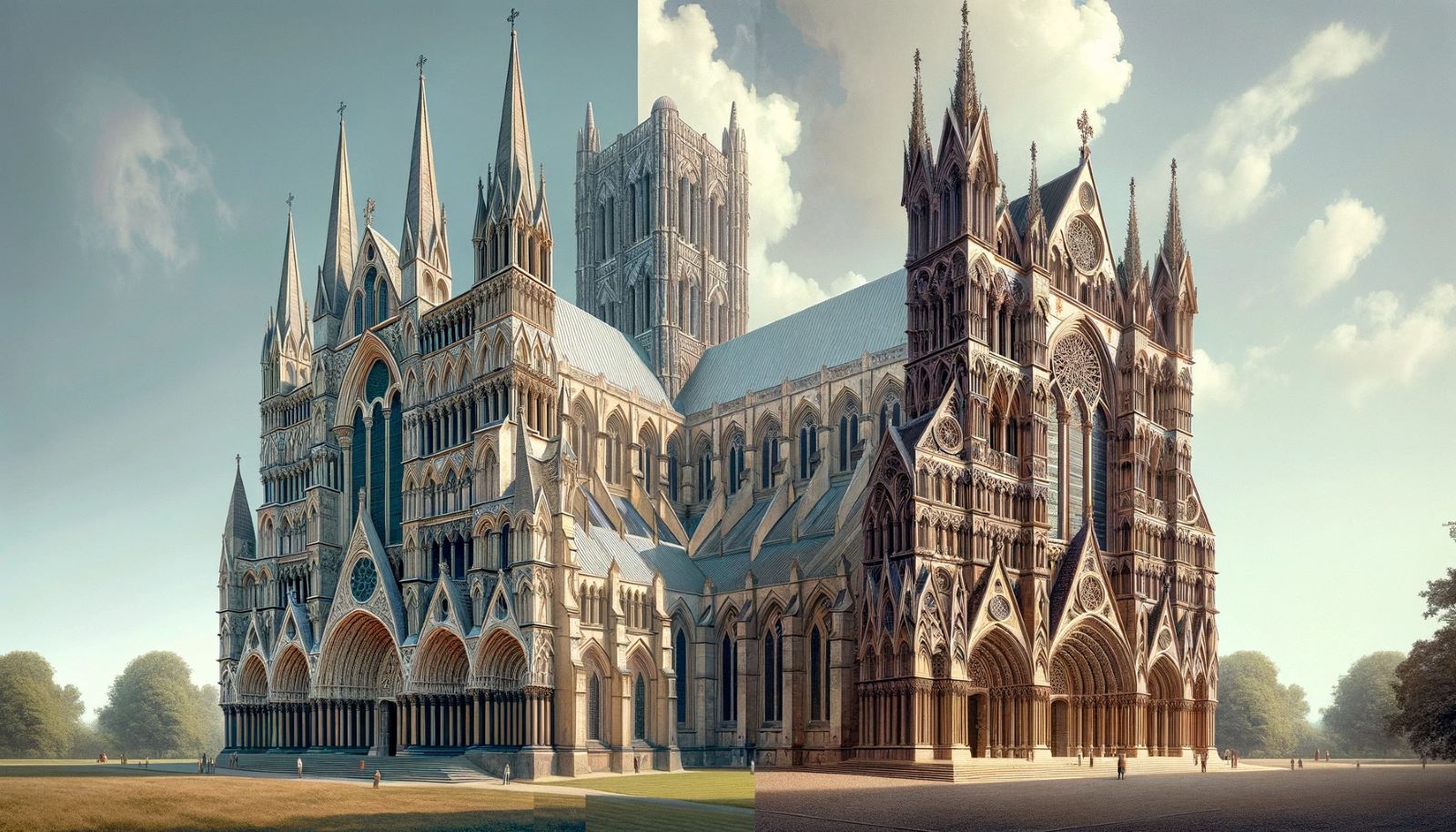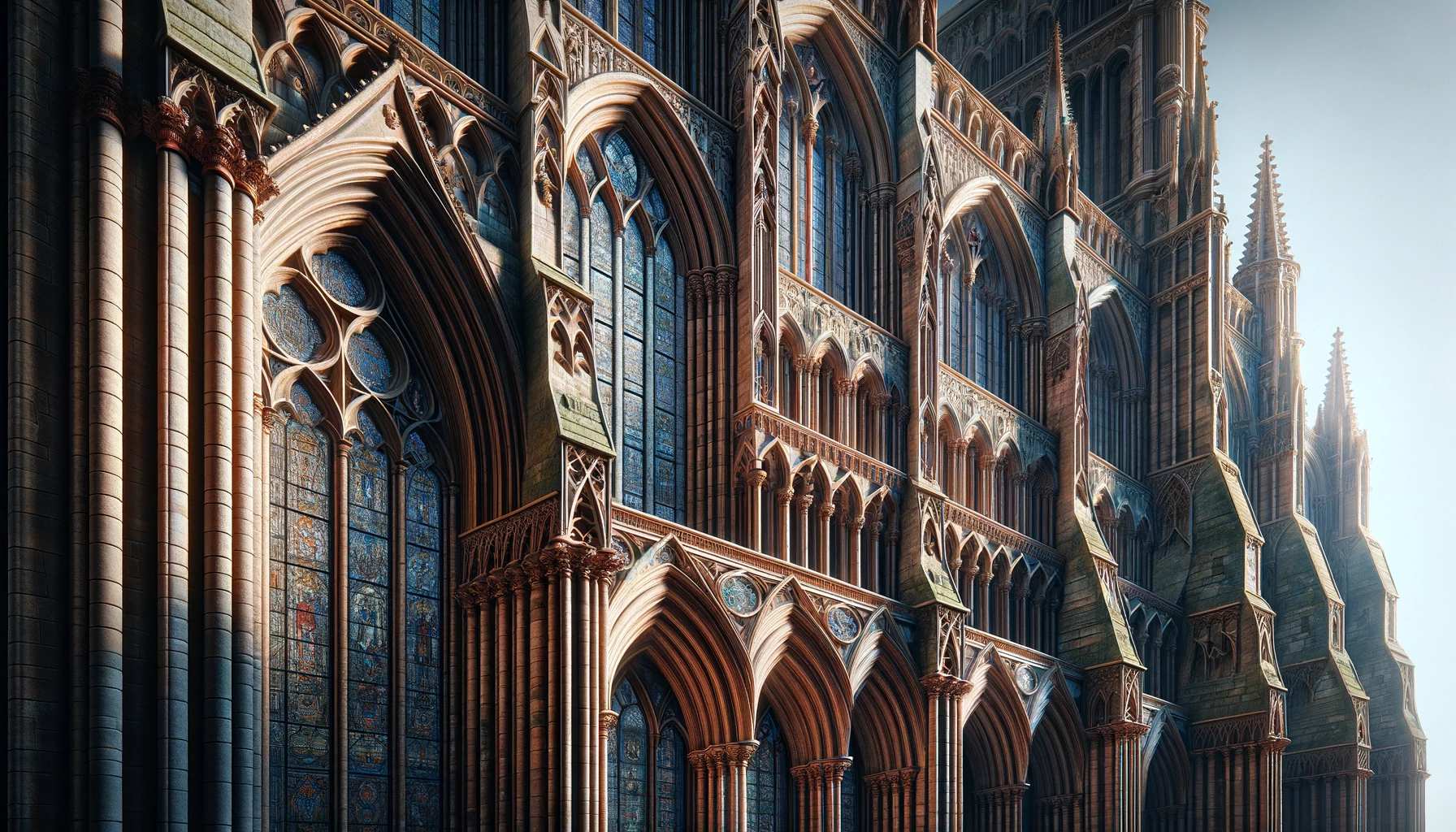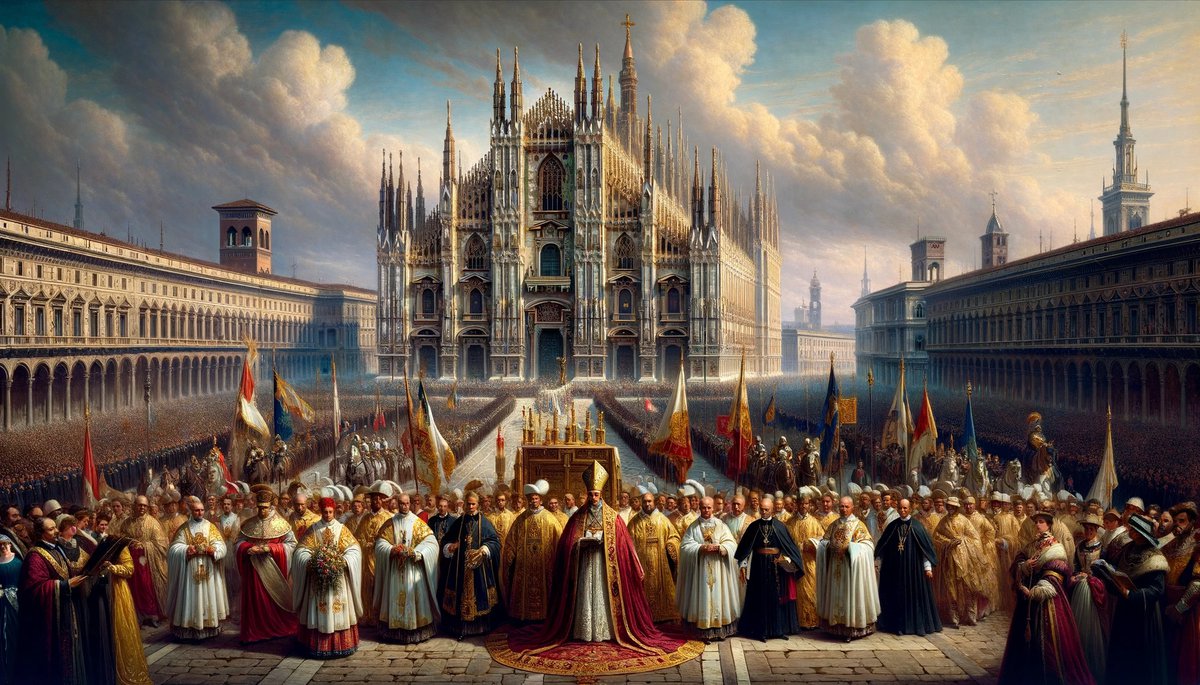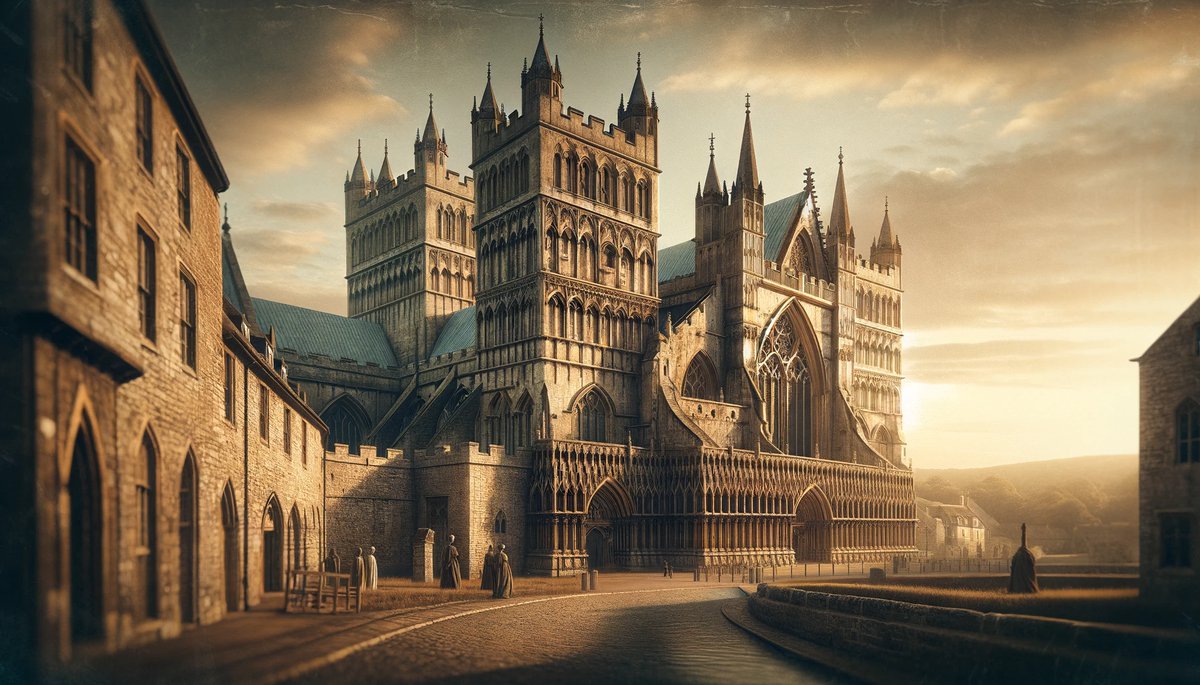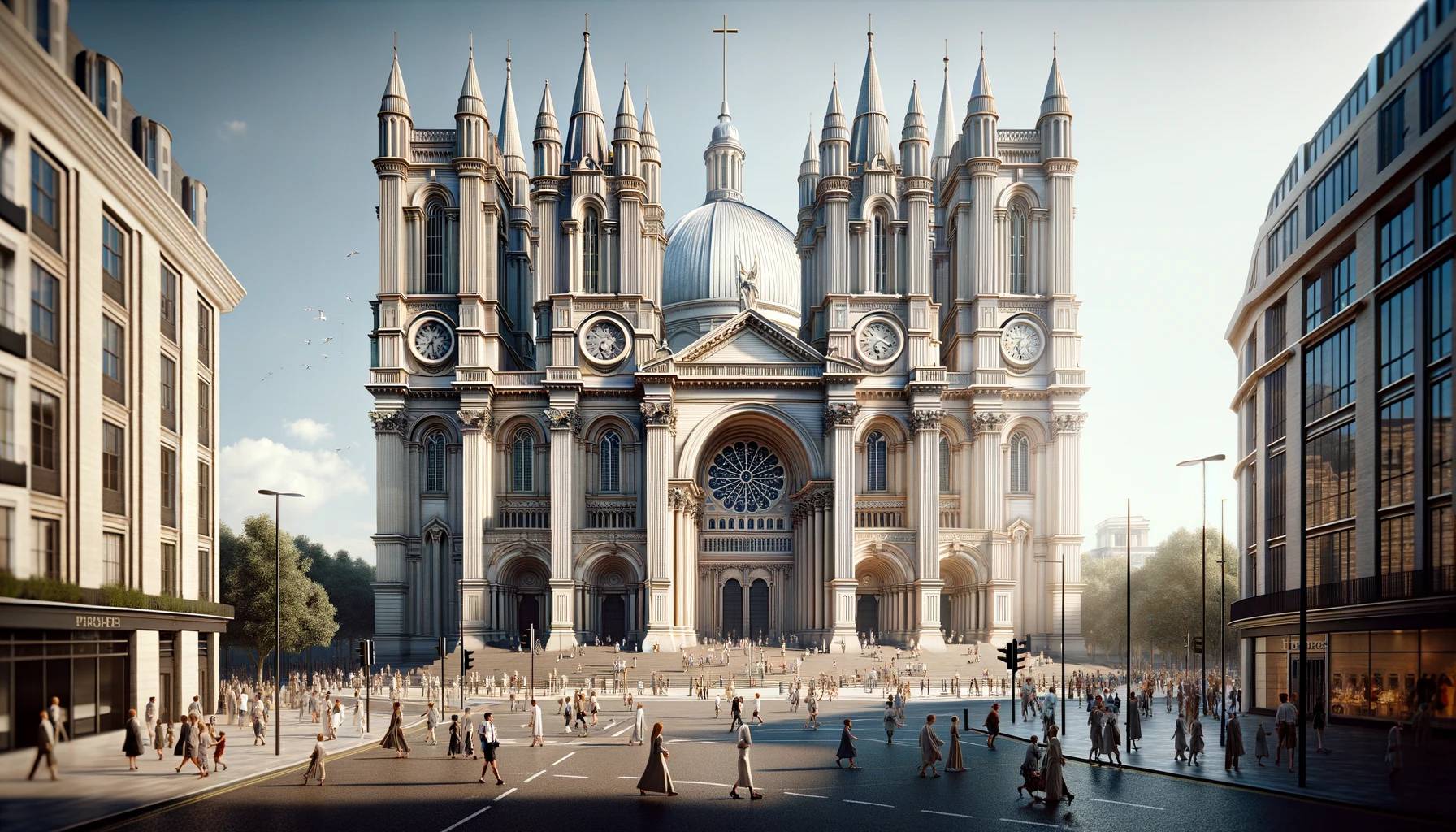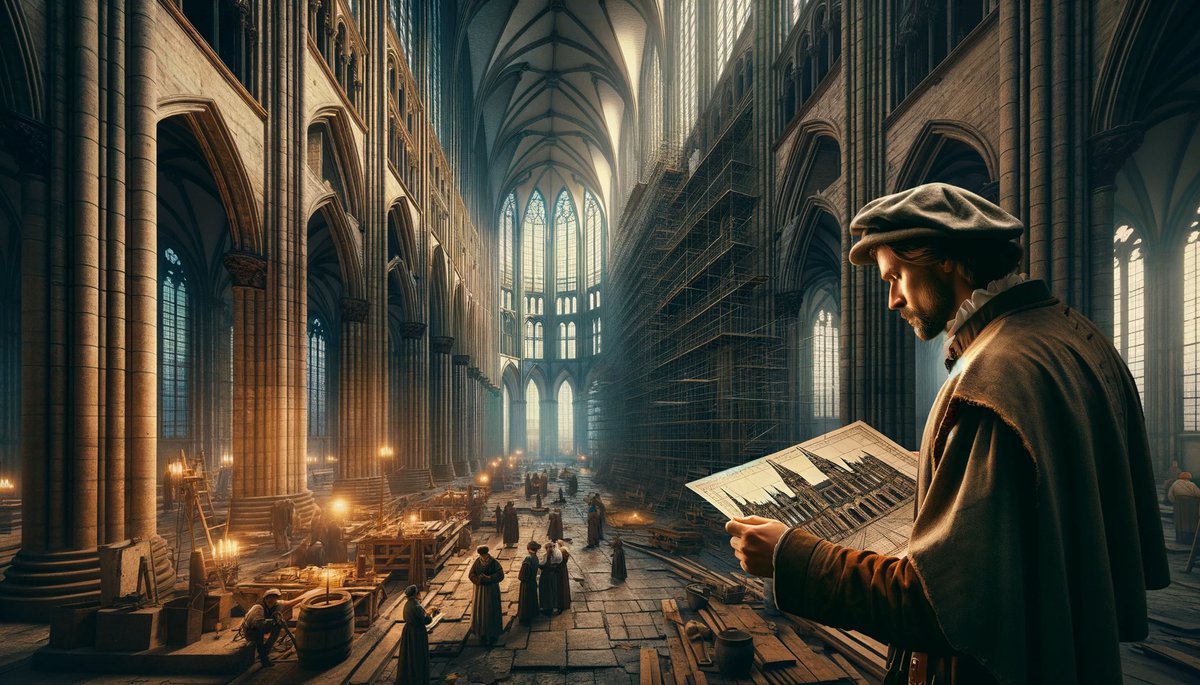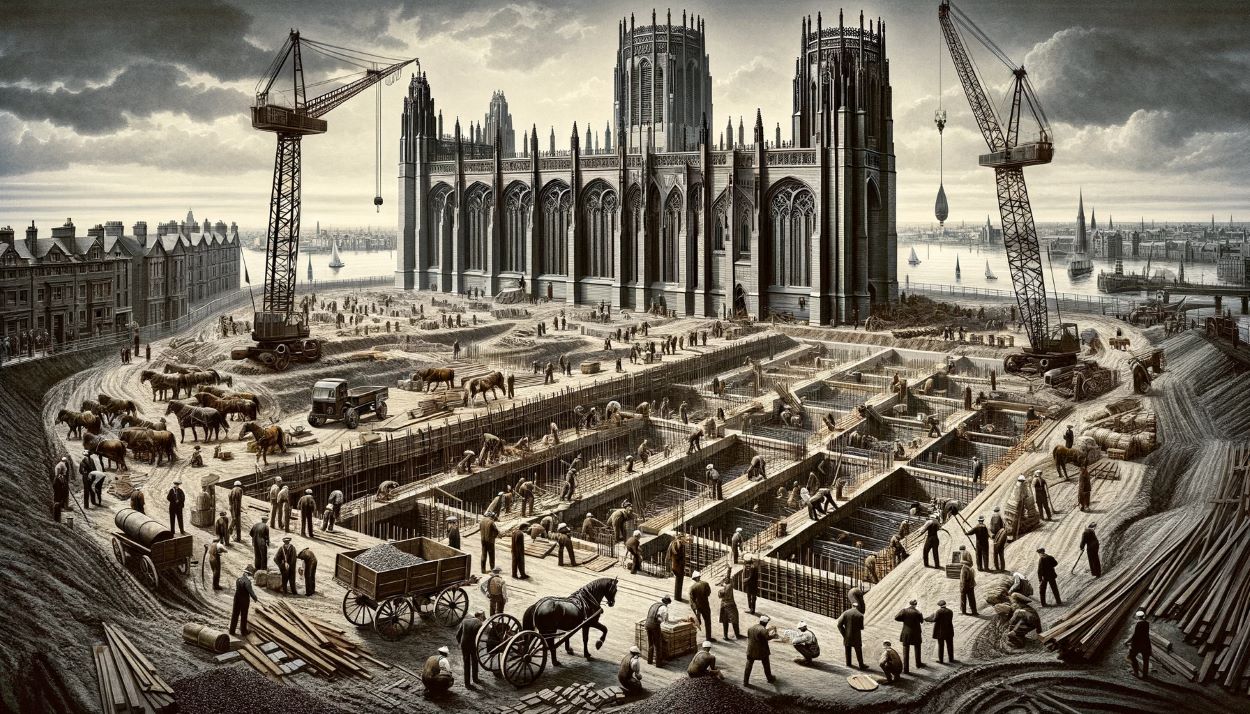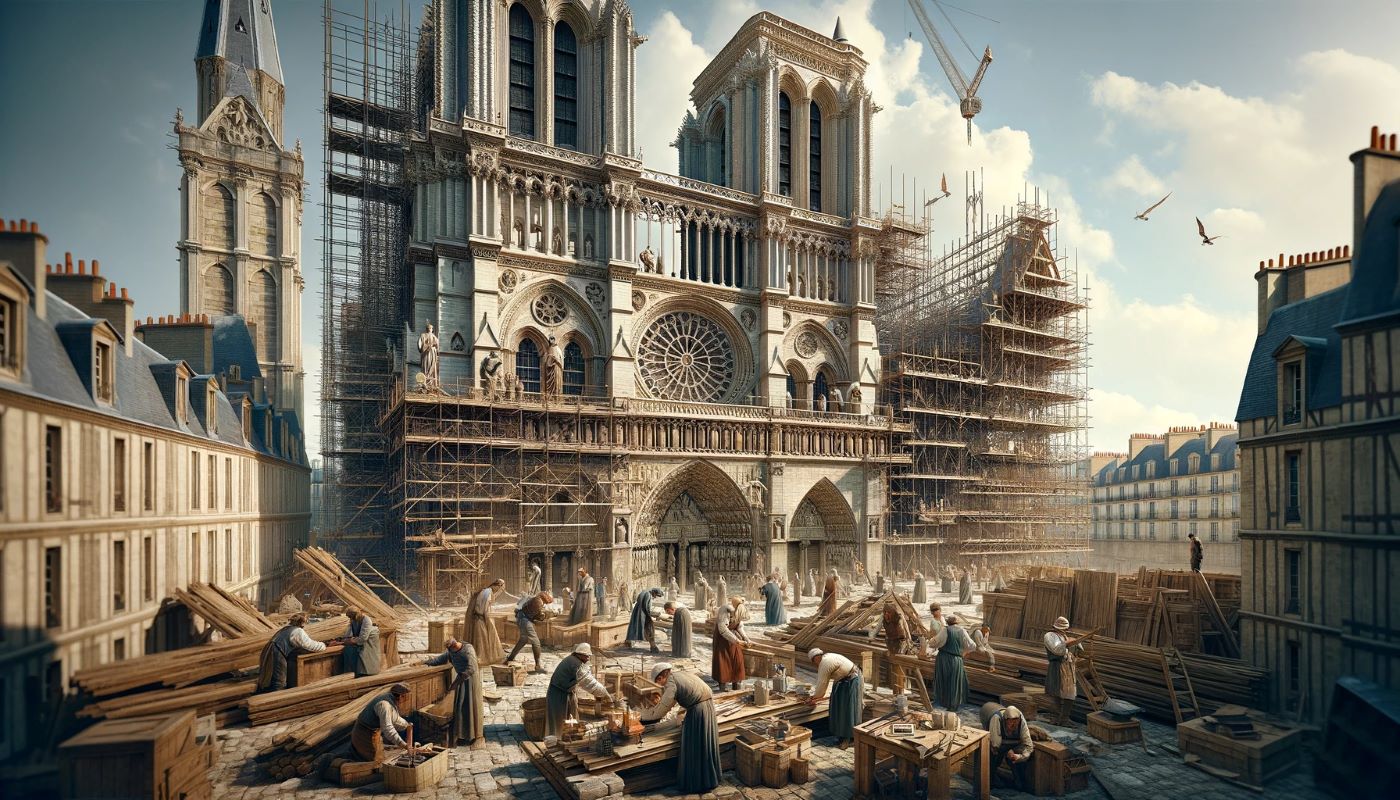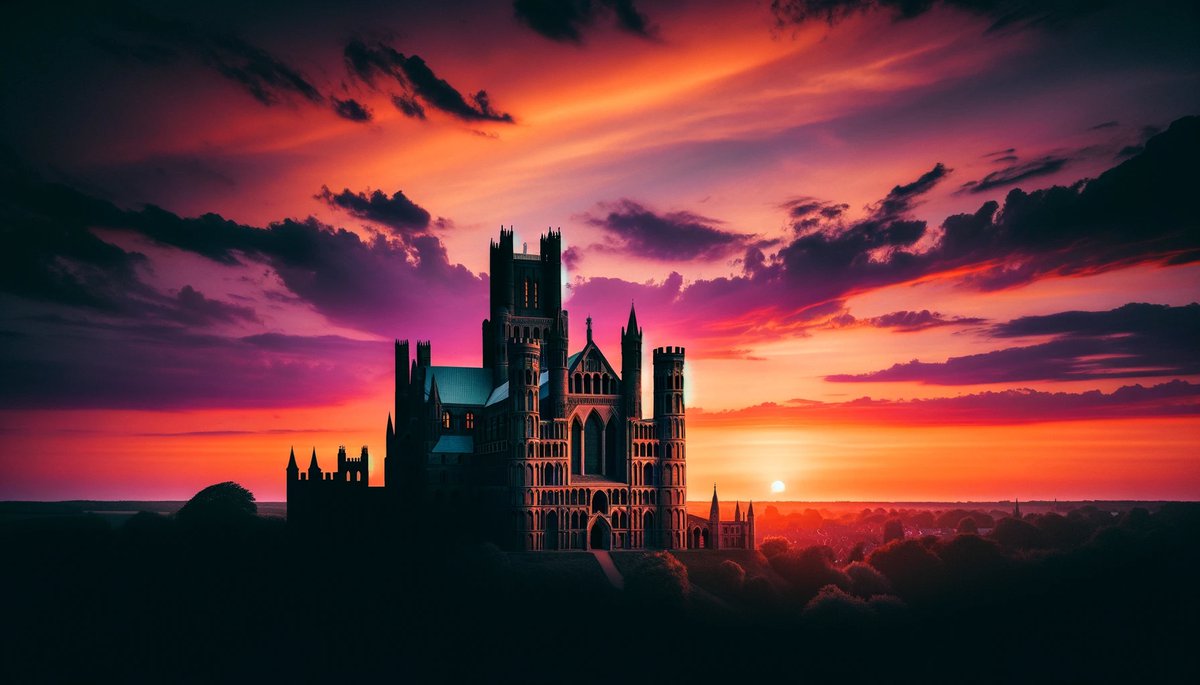Home>Arts and Culture>Salisbury Cathedral: How It Was Built
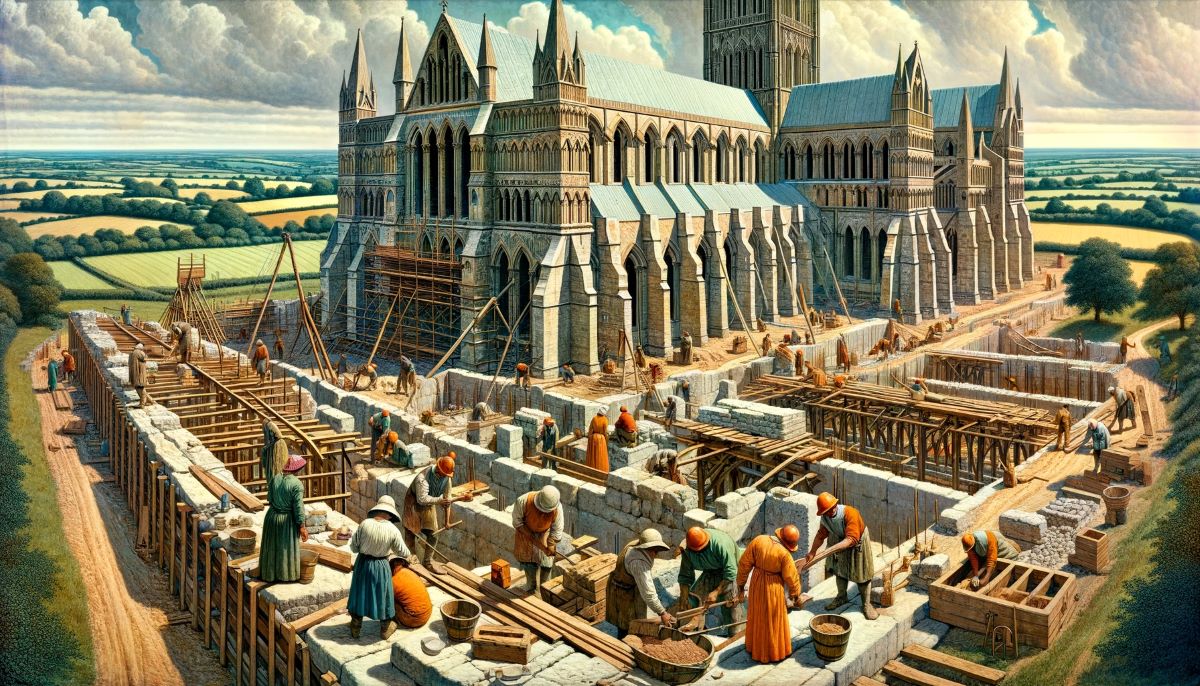

Arts and Culture
Salisbury Cathedral: How It Was Built
Published: February 16, 2024
Ericka Andersen, an editor at Christian.net, expertly merges digital strategy with content creation, focusing on faith and societal issues. Her communication skills enhance the platform's engaging narratives, fostering meaningful dialogue on belief's impact on society.
Discover the fascinating history and architectural marvels behind the construction of Salisbury Cathedral. Explore the intersection of arts and culture in this iconic landmark.
(Many of the links in this article redirect to a specific reviewed product. Your purchase of these products through affiliate links helps to generate commission for Christian.net, at no extra cost. Learn more)
Table of Contents
Introduction
Salisbury Cathedral, a masterpiece of medieval architecture, stands as a testament to the ingenuity and craftsmanship of the 13th century. Located in the heart of Salisbury, England, this iconic structure has captivated visitors for centuries with its awe-inspiring beauty and historical significance.
The cathedral, also known as the Cathedral Church of the Blessed Virgin Mary, is renowned for its soaring spire, which reaches a height of 404 feet, making it the tallest church spire in the United Kingdom. Its striking presence on the Salisbury skyline has made it a beloved landmark, drawing pilgrims, tourists, and art enthusiasts from around the world.
Beyond its impressive physical attributes, Salisbury Cathedral holds a rich cultural and religious heritage. As a place of worship and pilgrimage, it has been a center of spiritual devotion and communal gathering for over 800 years. The cathedral's tranquil cloisters, intricate stained glass windows, and ornate chapels provide a serene setting for reflection and contemplation.
Moreover, the cathedral's historical significance extends beyond its religious role. It serves as a living testament to the vision and skill of the medieval craftsmen and artisans who dedicated themselves to its construction. The enduring legacy of Salisbury Cathedral is a testament to the enduring power of human creativity and the enduring impact of architectural marvels.
As we delve into the story of Salisbury Cathedral, we will uncover the fascinating historical background, delve into the intricate design and architecture, explore the construction process, and gain insight into the materials used. We will also examine the challenges faced during its construction, the completion and dedication of this magnificent structure, and its lasting legacy and impact on art, culture, and history. Join us on a journey through time and craftsmanship as we unravel the remarkable story of Salisbury Cathedral.
Read more: Why Was Salisbury Cathedral Built
Historical Background
Salisbury Cathedral's story begins in the early 13th century, a time of great religious fervor and monumental architectural achievements. The cathedral's origins can be traced back to a pivotal moment in English history when the decision was made to relocate the bishopric from Old Sarum to its current location in Salisbury. This ambitious undertaking was driven by a desire to establish a new, purpose-built cathedral that would better serve the needs of the growing population and provide a more suitable setting for worship and religious administration.
The visionary project was spearheaded by Bishop Richard Poore, a man of great ambition and foresight. Under his leadership, the construction of the cathedral commenced in 1220, with the ambitious goal of creating a grand edifice that would stand as a symbol of spiritual devotion and architectural excellence. The site chosen for the new cathedral was a verdant meadow known as Avon Valley, where the foundations of this monumental endeavor were laid.
The historical context in which Salisbury Cathedral emerged is crucial to understanding its significance. The 13th century marked a period of profound social, political, and religious change in England. The construction of grand cathedrals was not only a testament to religious faith but also a demonstration of the power and influence of the Church. These architectural marvels were intended to inspire awe and reverence, serving as tangible expressions of divine glory and human devotion.
Salisbury Cathedral's historical background is also intertwined with the broader cultural and artistic movements of the era. The Gothic style, characterized by soaring arches, ribbed vaults, and pointed arches, was at the forefront of architectural innovation. The cathedral's design and construction reflected the evolving aesthetic sensibilities of the time, as well as the technical prowess of the craftsmen and artisans involved in its creation.
As the centuries passed, Salisbury Cathedral bore witness to a myriad of historical events, from royal visitations and religious ceremonies to periods of social upheaval and cultural transformation. Its enduring presence has made it a living chronicle of England's rich and complex history, serving as a touchstone for generations of pilgrims, scholars, and admirers of art and architecture.
In the next section, we will delve into the intricate design and architecture of Salisbury Cathedral, exploring the elements that make it a timeless masterpiece of medieval construction and artistic expression.
Design and Architecture
Salisbury Cathedral stands as a paragon of Gothic architecture, embodying the grandeur and spiritual aspiration of the medieval era. The cathedral's design is a testament to the innovative vision of its creators and the technical mastery of the craftsmen who brought it to life. At the heart of its architectural splendor lies a harmonious blend of structural ingenuity, symbolic significance, and aesthetic refinement.
The cathedral's most striking feature is its soaring spire, which ascends to a height of 404 feet, making it the tallest of its kind in the United Kingdom. This remarkable achievement in medieval engineering is a testament to the audacious ambition of the cathedral's designers. The spire, with its delicate tracery and elegant proportions, serves as a beacon of spiritual aspiration, reaching skyward in a testament to the divine majesty.
The interior of Salisbury Cathedral is a marvel of spatial design and artistic embellishment. The lofty nave, flanked by graceful aisles, creates a sense of ethereal grandeur, while the intricate vaulting overhead seems to defy the bounds of earthly gravity. The cathedral's transepts, adorned with exquisite rose windows and sculpted ornamentation, evoke a sense of celestial splendor, inviting visitors to contemplate the mysteries of faith and creation.
The stained glass windows of Salisbury Cathedral are among its most cherished treasures, suffusing the interior with a kaleidoscope of radiant hues and spiritual narratives. These luminous masterpieces, dating from the 13th to the 19th centuries, depict scenes from biblical lore, saints' lives, and celestial motifs, serving as a visual symphony of divine revelation and human devotion.
The exterior of the cathedral is adorned with a profusion of sculptural details, including intricately carved portals, ornate buttresses, and delicate tracery. The west front, with its magnificent array of statuary and bas-reliefs, presents a rich tapestry of religious iconography and allegorical symbolism, inviting contemplation and reverence.
In its design and architecture, Salisbury Cathedral embodies the ethos of the Gothic style, with its emphasis on verticality, luminosity, and spiritual transcendence. The cathedral's creators sought to fashion a sacred space that would uplift the soul and inspire awe, and in this, they succeeded magnificently.
Next, we will delve into the fascinating process of constructing this architectural marvel, shedding light on the remarkable feats of engineering and craftsmanship that brought Salisbury Cathedral into being.
Construction Process
The construction of Salisbury Cathedral was a monumental endeavor that demanded unwavering dedication, technical expertise, and sheer determination. The process of bringing this architectural marvel to fruition unfolded over several decades, marked by remarkable feats of engineering and craftsmanship that continue to inspire awe and admiration.
The construction of the cathedral commenced in 1220 under the visionary leadership of Bishop Richard Poore. The site chosen for this ambitious project was a verdant meadow in Avon Valley, where the foundations of the cathedral were laid with meticulous precision. The process began with the excavation of the site and the laying of the groundwork, a labor-intensive undertaking that set the stage for the monumental edifice that would rise from the earth.
One of the most remarkable aspects of the construction process was the use of innovative building techniques that allowed for the creation of soaring vaults, slender columns, and intricate tracery. The cathedral's designers and craftsmen employed a sophisticated understanding of geometry and structural mechanics to achieve feats of architectural daring, such as the construction of the iconic spire, which stands as a testament to medieval engineering prowess.
The construction of Salisbury Cathedral was a collaborative effort that brought together a diverse array of skilled artisans, including stonemasons, carpenters, glaziers, and sculptors. These craftsmen labored tirelessly, often under arduous conditions, to bring to life the intricate details and embellishments that adorn the cathedral's interior and exterior. Their collective expertise and unwavering commitment to excellence are evident in every aspect of the cathedral's design and construction.
The cathedral's construction process was not without its challenges. The logistics of sourcing and transporting materials, the complexities of working at great heights, and the demands of adhering to exacting architectural specifications presented formidable obstacles. Yet, through ingenuity, perseverance, and a shared sense of purpose, the craftsmen and laborers overcame these challenges, leaving behind a legacy of unparalleled beauty and technical achievement.
As the decades passed, the cathedral gradually took shape, its soaring spire and graceful arches reaching ever skyward. The completion of this monumental undertaking stands as a testament to the indomitable spirit of human creativity and the enduring legacy of medieval craftsmanship. Today, Salisbury Cathedral stands as a living testament to the vision and skill of its creators, inviting visitors to marvel at the timeless beauty and ingenuity that define this architectural masterpiece.
Next, we will explore the materials used in the construction of Salisbury Cathedral, shedding light on the enduring qualities of the elements that form the foundation of this iconic edifice.
Materials Used
The construction of Salisbury Cathedral relied on a meticulous selection of materials, each chosen for its durability, aesthetic appeal, and symbolic significance. The cathedral's creators sought to imbue the structure with a sense of timeless grandeur, and the materials used in its construction were integral to achieving this lofty ambition.
One of the primary materials employed in the cathedral's construction was limestone, sourced from quarries in the vicinity of Salisbury. This versatile stone, known for its strength and workability, formed the foundation of the cathedral's walls, pillars, and intricate tracery. The creamy hue of the limestone lent a warm and luminous quality to the cathedral's exterior, while its robust nature ensured the structural integrity of the edifice.
In addition to limestone, the cathedral's builders utilized a wealth of timber, harvested from the surrounding forests. Oak, in particular, played a vital role in the construction, serving as the framework for the cathedral's roof, vaults, and interior fittings. The rich, golden tones of the oak complemented the stone elements, creating a sense of warmth and richness within the cathedral's sacred spaces.
The cathedral's windows, renowned for their resplendent stained glass, were adorned with a kaleidoscope of vibrant hues, crafted from a fusion of molten sand, metallic oxides, and pigments. The meticulous artistry of the glaziers transformed these raw materials into luminous masterpieces, suffusing the interior with a celestial glow and illuminating the narratives of faith and devotion depicted within.
The lead, used to secure the stained glass panels within their delicate tracery, was another essential material in the cathedral's construction. Its malleability and weather-resistant properties made it an ideal choice for ensuring the longevity and stability of the intricate windows, which remain a defining feature of the cathedral's aesthetic allure.
The materials used in the construction of Salisbury Cathedral were not merely utilitarian; they were imbued with symbolic significance, representing the enduring qualities of faith, craftsmanship, and the natural world. The careful selection and masterful integration of these materials contributed to the cathedral's status as a timeless masterpiece, standing as a testament to the transformative power of human creativity and the enduring legacy of medieval craftsmanship.
Read more: Why Was The Salisbury Cathedral Built
Challenges Faced
The construction of Salisbury Cathedral was not without its formidable challenges, as the ambitious endeavor tested the limits of medieval engineering and craftsmanship. One of the most significant obstacles faced by the cathedral's builders was the sheer scale and height of the structure. The soaring spire, reaching a height of 404 feet, presented unprecedented challenges in terms of structural stability and construction logistics. Working at such dizzying heights required innovative scaffolding and rigging systems, as well as a keen understanding of the principles of balance and load-bearing. The craftsmen and laborers who toiled on the spire faced vertiginous conditions and the constant threat of falls, yet their unwavering commitment to the project ensured the successful completion of this architectural marvel.
Another formidable challenge arose from the logistics of sourcing and transporting materials to the construction site. The sheer volume of stone, timber, and other essential materials required for the cathedral's construction necessitated a complex network of supply chains and labor-intensive processes. Quarrying and shaping the massive limestone blocks, felling and processing timber for the roof and interior elements, and transporting these materials to the construction site demanded meticulous planning and coordination. Furthermore, the cathedral's remote location posed additional challenges, as the transportation of materials across long distances required the deployment of innovative solutions and the collective effort of countless laborers and craftsmen.
The cathedral's builders also grappled with the complexities of working with intricate architectural elements, such as the delicate tracery of the windows and the ornate sculptural details adorning the exterior. The precision and artistry required to fashion these elements demanded exceptional skill and patience, as well as a deep understanding of geometry and design. The challenges of working with such intricate components were compounded by the limitations of medieval tools and technology, yet the craftsmen persevered, leaving behind a legacy of unparalleled beauty and technical achievement.
Despite these formidable challenges, the construction of Salisbury Cathedral stands as a testament to the indomitable spirit of human creativity and the enduring legacy of medieval craftsmanship. The cathedral's builders overcame seemingly insurmountable obstacles through ingenuity, perseverance, and a shared sense of purpose, leaving behind a legacy of unparalleled beauty and technical achievement that continues to inspire awe and admiration to this day.
Completion and Dedication
The culmination of Salisbury Cathedral's construction marked a momentous achievement in medieval architecture and a testament to the unwavering dedication of the countless craftsmen and laborers who contributed to its creation. After decades of meticulous labor and visionary craftsmanship, the cathedral stood as a towering symbol of faith, artistry, and human endeavor.
The completion of the cathedral was not merely a milestone in architectural history; it was a profound spiritual and communal event. In 1258, amidst great ceremony and reverence, the cathedral was consecrated, signifying its formal dedication to the glory of God and the spiritual well-being of the community it served. The consecration ceremony, presided over by the Bishop of Salisbury, was a moment of profound significance, marking the transition of the cathedral from a work of stone and timber to a sacred space imbued with divine presence and purpose.
The dedication of Salisbury Cathedral was a communal celebration, drawing together clergy, nobility, and townspeople in a shared expression of faith and gratitude. The consecration ceremony was accompanied by solemn processions, joyful hymns, and the reverberating peal of bells, echoing across the surrounding countryside. The cathedral's completion and dedication were not merely events of historical import; they were moments of spiritual transcendence, affirming the cathedral's role as a beacon of divine grace and human aspiration.
The completion and dedication of Salisbury Cathedral also marked the beginning of a new chapter in its history. As the cathedral opened its doors to worshippers and pilgrims, it became a focal point for communal gatherings, religious observances, and cultural exchange. Its soaring spire and resplendent interior provided a setting for spiritual contemplation and communal worship, fostering a sense of unity and reverence among all who crossed its threshold.
The enduring legacy of Salisbury Cathedral's completion and dedication is a testament to the enduring power of human creativity and the enduring impact of architectural marvels. The cathedral stands as a living testament to the vision and skill of its creators, inviting visitors to marvel at the timeless beauty and ingenuity that define this architectural masterpiece.
Legacy and Impact
The legacy of Salisbury Cathedral transcends its physical presence, extending into the realms of art, culture, and spirituality. As a timeless masterpiece of medieval architecture, the cathedral has left an indelible imprint on the cultural landscape, inspiring generations with its grandeur and spiritual resonance.
From an architectural standpoint, Salisbury Cathedral stands as a paragon of Gothic innovation, influencing subsequent generations of builders and designers. Its soaring spire, elegant vaults, and luminous stained glass have served as a wellspring of inspiration for countless architectural marvels, both within England and beyond. The cathedral's harmonious blend of structural daring and aesthetic refinement continues to captivate admirers of art and engineering, reaffirming its status as a touchstone of architectural excellence.
Beyond its architectural significance, Salisbury Cathedral has played a pivotal role in shaping the cultural and spiritual identity of the region. As a place of worship and pilgrimage, it has fostered a sense of communal devotion and spiritual contemplation for over eight centuries. The cathedral's tranquil cloisters, resplendent chapels, and ethereal nave have provided a sanctuary for seekers of solace and enlightenment, nurturing a profound connection between humanity and the divine.
The impact of Salisbury Cathedral also extends into the realm of historical consciousness, serving as a living chronicle of England's rich and complex past. From royal coronations and religious ceremonies to periods of social upheaval and cultural transformation, the cathedral has borne witness to a myriad of historical events, offering a tangible link to the tapestry of England's heritage. Its enduring presence has made it a revered symbol of continuity and resilience, reminding visitors of the enduring legacy of human creativity and perseverance.
Moreover, the cathedral's cultural and artistic significance is manifested in its role as a custodian of heritage and creativity. The resplendent craftsmanship of its sculptural adornments, the luminous narratives of its stained glass, and the ethereal beauty of its architectural forms have enriched the artistic legacy of humanity, serving as a testament to the enduring power of creative expression.
In essence, the legacy and impact of Salisbury Cathedral are woven into the fabric of human history and creativity, resonating across centuries and continents. Its enduring influence as a cultural icon, architectural marvel, and spiritual sanctuary reaffirms its status as a living testament to the enduring power of human creativity and the enduring impact of architectural marvels.


